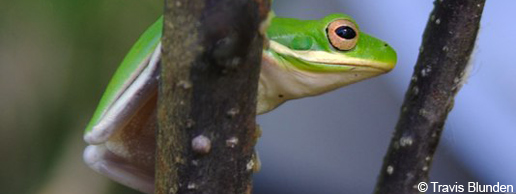
Southern Toad
Bufo terrestris
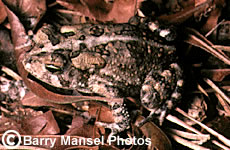
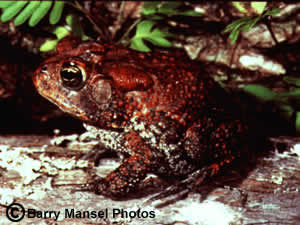
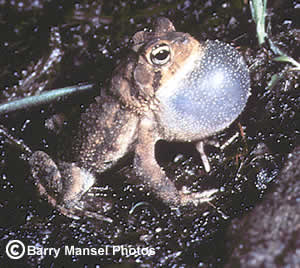
Description: The southern toad is characterized by highly pronounced knobs and crests that occur on its head. The two crests run forward from the knobs and come close to one another near the snout. The overall coloring of this toad varies from brown, black, or red. It has no dark spots, and only one or two warts. Although it has long been suggested, humans do not get warts from touching toads. However, the material they secrete from the parotoid glands (located at the back of the head, behind the ears) may be irritating to human mucous membranes, but not toxic.
Habitat: The southern toad is common to sandy areas, marshes, and mixed hardwood swamps. Like most toads, the southern toad is most active at night. It hides during the day, most often seeking shelter in burrows that are self-constructed. Southern toads will eat small invertebrates including beetles, earwigs, ants, cockroaches, mole crickets, and snails, but are also known to eat anything they can swallow
Size: The adult Southern Toad ranges in length from 1.75 to 4.5 inches.
Click HERE to listen to the call of the Southern Toad.
(A new browser window will open with the sound file)
The native Southern Toad is sometimes mistaken for the Giant Toad (Bufo marinus). Here are a few ways to tell these toads apart:
- The Giant Toad has very large paratoid glands. The Southern Toad has smaller kidney-shaped paratoid glands, which secrete a substance that may be irritating to mucous membranes but is not toxic.
- The Southern Toad has two ridges on its head that end in knobs. The Giant Toad does not have these.
- The adult Southern Toad ranges in length from 1.75 to 4.5 inches. The adult Giant Toad ranges in length from 4 - 6 inches.
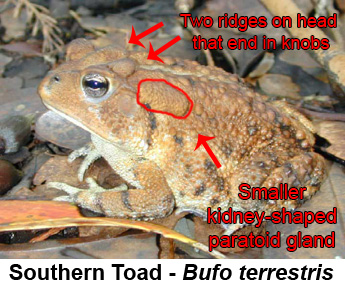 |
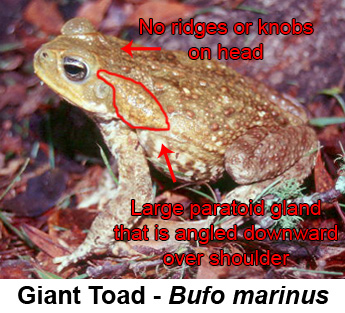 |
Credit: USGS/Florida Integrated Science Center
Development of these pages was a cooperative effort. Photos were supplied by Barry Mansell Photos and calls were provided by Paul Moler, state herpetologist for the Florida Fish and Wildlife Conservation Commission.


 Location: http://yourdomain.edu
Location: http://yourdomain.edu